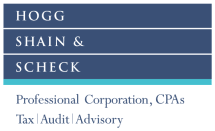Are you ready for the new trust reporting requirements?
Are Your Trusts Lined Up In A Row?
In 2018, the Federal government proposed new tax legislation (the “New Rules”) for trusts, which was passed into law on December 15, 2022. The New Rules take effect for trusts with taxation years ending on or after December 31, 2023 and impact both trust filing and disclosure requirements.
Filing Requirements
Under the old rules, a trust was, generally, exempt from filing an annual T3 Trust Income Tax and Information Return (a “T3 Return”) unless one of the following situations applied:
- The trust had taxes payable for the year;
- The trust had a capital gain in the year;
- The trust disposed of a capital property during the year; or
- The trust made a distribution during the year to one or more beneficiaries.
The old rules exempted many common personal and commercial trust arrangements that must now file unless the trust meets one of the exceptions (see below) available under the New Rules. A trust’s T3 Return must be filed with the CRA no later than 90 days after its taxation year-end.
Filing Exceptions
The New Rules greatly narrowed the scope of filing exceptions available to trusts. Where an exception applies, the trust’s filing requirements are determined by the old rules. The exceptions include trusts that are:
- Trusts that either:
- Have been in existence less than three months; or
- Hold qualifying assets whose value throughout the year does not exceed $50,000. Qualifying assets are:
- Cash / bank accounts holding only cash;
- Shares, debt or rights listed on a designated stock exchange;
- Units of a mutual fund trust;
- Shares of a mutual fund corporation;
- An interest in a related segregated fund; and
- Debt guaranteed by the Government of Canada, by a provincial government or agency, or by a municipality;
- Graduated rate estates;
- Qualified disability trusts;
- Employee life and health trusts;
- Deferred profit sharing plans;
- RESPs;
- RRSPs;
- TFSAs; and
- FHSAs.
Disclosure Requirements
In addition to new filing requirements, the New Rules introduced new disclosure requirements for a trust’s ‘reportable entities’. Any trust required to file a T3 Return under the New Rules (i.e.: does not qualify for a filing exception) is also subject to the new disclosure requirements. For this purpose, a trust’s ‘reportable entities’ are defined as:
- A trustee;
- A beneficiary;
- A settlor as defined in s.17(15) of the Income Tax Act (see below); and
- Any person with the ability, by virtue of the terms of the trust agreement, to exert influence over the trustee with respect to allocations of the trust’s income and capital.
For this purpose, an extended meaning of settlor applied, which includes not only the person who established the trust but also any non-arm’s length person who transferred, loaned, or sold property to the trust, or paid expenses on its behalf.
Required Information
To comply with the disclosure requirements, a trust’s T3 Return must include a completed Schedule 15 –Beneficial Ownership Information of a Trust (the “T3S(15))” with the following information for each reportable entity that was a reportable entity at any time during a taxation year:
- Tax Identification Number (SIN, business number, etc.);
- Name;
- Address;
- Date of birth (for individuals); and
- Country of residence.
Where a reportable entity is more than one type (i.e.: both a trustee and a beneficiary), the required information must be entered for each entity type.
Beneficiaries that are Not Known or Ascertainable
With respect to disclosing information about beneficiaries, the T3S(15) has a section for beneficiaries whose identity is not known or ascertainable by reasonable effort. However, this wording in the legislation is somewhat confusing. ‘Not known or ascertainable by reasonable effort’ does not seem to mean difficult to obtain but rather, it refers to a class of beneficiaries that are unknown at the of filing due to the terms of the trust. The Department of Finance provided the following example in its Technical Notes:
“the beneficiary of a trust may not be known where the trust provides for a class of beneficiaries that includes the settlor’s current children and grandchildren and any children or grandchildren that the settlor may have in the future. In these circumstances the reporting requirement will be met if the relevant information in respect of all of the settlor’s current children and grandchildren are included as well as the details of the terms of the trust that extend the class of beneficiaries to any of the settlor’s future children or grandchildren.”
In other words, the unknown beneficiary section of the T3S(15) can be completed by inputting the terms from the trust agreement that allow for potential future beneficiaries. The section is not meant for providing partial information on beneficiaries that are difficult to locate or communicate with.
Penalties
Non-compliance of the New Rules can result in significant penalties. Where a trust is subject to the new disclosure requirements and a person (typically a trustee) knowingly, or under circumstances amounting to gross negligence, either:
- Makes, participates in, or allows a false statement or omission in the T3 Return; or
- Fails to file the T3 Return that person could be liability for penalty equal to the greater of i) $2,500 and ii) 5% of the maximum fair market value of the trust’s property during the taxation year






